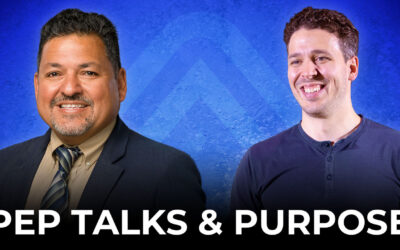We all have goals and big things we want to achieve in our businesses and our lives. But simply setting a goal isn’t enough. We need to create the rights systems and do the right work to make the goal a reality. That’s where the DOORS framework from Brendon Burchard comes in. This framework will help you make progress toward your goals.
D: Definition
Define what success looks like. It’s important to be as specific as possible. If your goal is “increase profit this year,” that’s vague. By this description, if you increase profits by $1, then you achieved success. But certainly you wanted more than that.
Then describe and imagine exactly what it will look like, feel like, and sound like, when you achieve this big goal. This is similar to how olympic athletes visualize their games and what it will feel like to stand on the podium. This is important because when you have a clear vision that gets you excited, it’s easier to stay on track and do the work.
O: Outcomes
Once you have the definition and picture of the end goal, now it’s time to identify the mid-process outcomes. These are the milestones you need to achieve along the way to make this big goal possible. If you have a defined annual goal, these might outcomes might be the monthly or quarterly milestones. This part is important because if you only think about the end goal, it may feel too big or too far away, and you may procrastinate on doing the work.
Think about doing a 1-week trek to climb a mountain. Getting to the summit is the end goal. But you need to have a plan of where you’re hiking to each day and which camps you’re staying at each night. Without these milestones, you could get lost on your way to the top. Or you could put yourself in a position where you didn’t make enough progress on days 1-5, so then you have to do way too much on days 6 and 7 to reach the summit.
O: Obstacles
This is where you identify the things that will get in the way of you achieving the outcomes. Another way to think of this is doing a “pre-mortem.” We all know what a post-mortem is; you review a project after it’s done to see what went well and what didn’t. A pre-mortem allows you to rehearse this ahead of time
If you have an annual goal, imagine you get to the end of the year and you didn’t reach the goal. Ask yourself why. What happened? Everything you identify here are the obstacles. And now that you know what the obstacles are, you can make sure you avoid these obstacles. And that’s where the next letter in the framework comes in.
R: Rhythm
These rhythms are the daily and weekly tasks you need to do in order to avoid the obstacles, to complete the outcomes, and to ultimately reach the goal. If you don’t schedule time every day to do the work, then days become weeks, and weeks become months. And before you know it, all this time went by and didn’t make any progress.
A goal without a plan is a wish. The rhythm is the consistent plan to make sure you turn a wish into reality.
S: Social
This is all about community and accountability. You don’t have to do this alone. Surround yourself with other people who are also working on big goals, and hold each other accountable. When we make a promise to someone else, we tend to hold that more sacred than a promise we make to ourselves.
When you use every letter in this DOORS framework, you’ll make a lot more progress than you thought possible.








